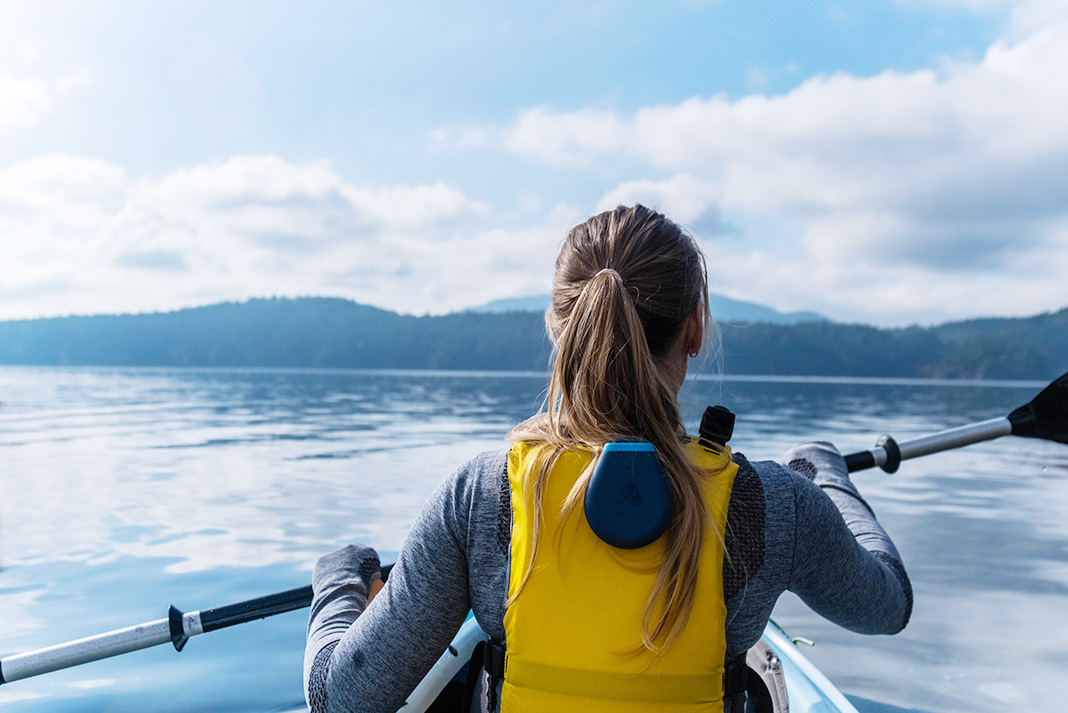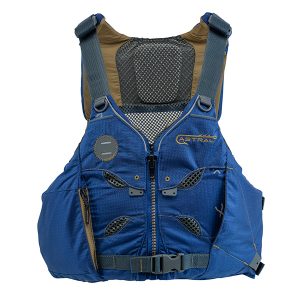Products You May Like
According to the United States Coast Guard’s 2018 Boating Statistics report, canoe, kayak and standup paddleboard fatalities were down 12.8 percent. The number of deaths for personal paddlecraft dropped from 149 in 2017 to 133 last year. Jim Emmons, public outreach director at the Watersports Safety Foundation (WSF), credits a tide change in awareness. “WSF’s program performance metrics show improving attitudes and behaviors regarding safety,” he says.
As paddlesports explode around the world, more people on the water could lead to more accidents and injuries. So, Emmons explains, a decline in fatalities while the number of participants increases points to more people wearing life vests and carrying the proper equipment.
The US Coast Guard requires paddlers to carry a white light, whistle and CG approved life vest. But for peace of mind, most anglers carry additional safety gear.

Ultimate Rigging Guide for Kayak Safety Gear
Life Vest
The biggest contributor to reducing paddler fatalities is increased use of life vests. As the media, tournament networks, manufactures and professional anglers adopt a pro-PFD message, the kayak fishing community has jumped onboard.
Advanced life vests are more comfortable and functional making them easier to wear and use. Anglers have two choices: foam or inflatable
Foam vests have inherent floatation favored by whitewater, offshore and other angles who need a reliable PFD that will provide floatation even if the wearer is unconscious. Life vests for sit-on-top kayaks with a high seat back have foam higher on the back. The front of the vest features pockets that can be filled with tools and safety gear.
When packing a life vest, consider safety equipment that would be important if the paddler is separated from the kayak. To be ready for anything, carry a cell phone, personal locator beacon (PLB), strobe and whistle along with a safety knife.
Inflatable vests use a CO2 cartridge to inflate an air bladder. Inflatables can be manually or automatically activated. Inflatable vests are lighter, smaller and more comfortable, making them popular with anglers fishing in summer heat. Standup paddleboarders and tournament anglers also appreciate improved range of motion and ergonomics of an inflatable vest.
Extra Paddle
Don’t leave the beach without an extra paddle stashed inside the kayak. A broken or lost paddle could lead to a serious rescue situation easily avoided by carrying another set of blades.
To keep the paddle in reach, leash the paddle halves together and tie to a pad eye inside the hatch.
 Sound Device
Sound Device
Coast Guard regulations read: “Boats under 20 meters must have aboard a means of making an efficient sound.” Shouting and yelling doesn’t count, a kayaker needs to carry a pealess whistle on his PFD. When a motorboat is speeding directly at a kayaker, a loud whistle may be the only way to get the boater’s attention.
VIEW ALL WHISTLES & SIGNALING DEVICES
 Paddle Leash
Paddle Leash
Use a paddle leash sparingly. While keeping the paddle with the kayak is important, the risk of tangling in the leash when the kayak capsizes can make the leash hazardous. Do not use the leash in whitewater or the surf zone where there is a serious risk of capsize. Always carry a safety knife when using a paddle leash.
Personal Locator Device
In an emergency, anglers using a personal locator device can push a button and immediately alert authorities. These handheld electronic signals use GPS to send location information to rescue services.
Personal locator beacons are based on the EPIRB technology that directly connects the user to rescue services. PLB’s use an internal, non-rechargeable battery and are registered with the National Oceanographic and Atmospheric Administration (NOAA).

A new generation of signaling devices offer greater capabilities. Using the GEOS satellite network, Devices like Somewear, SPOT and Garmin InReach will alert rescue services in the event of an emergency and allow two-way communication and even navigation and tracking. In addition to the purchase price of the unit, users are required to pay a subscription fee to use the service.
Attaching the signaling device to a life vest ensures the user will be able to indicate an emergency even if separated from the kayak.
SHOP LOCATOR BEACONS ON AMAZON
Lights
Coast Guard regulations require paddlers to use a white light between dusk and dawn. While this could include a headlamp or flashlight visible for two nautical miles, many anglers choose a white navigation light mounted on a pole.
To improve night vision and maintain visibility, the pole should be 48-inches long and the light should be directed up and to the sides. Mount the light to a gear track or stick it in a rod holder so it is easy to install after dark.
Motorized kayaks also need red and green lights on the bow to indicate the direction the boat is traveling. When the red light is visible, the boat is traveling right to left.
In case the angler becomes separated from the kayak, carry a waterproof signal strobe in a life vest pocket. Check the batteries and test the light frequently.
First Aid
A basic first aid kit in a watertight container packed with bandages, medical tape and pain reliever can save a trip. Add a three-foot length of 50-pound-test fishing line to act as a hook remover. Store the kit in a waterproof bag stashed inside the kayak.
 Helmet
Helmet
River anglers need a whitewater helmet to protect against serious injury. Whitewater helmets have a hard outer shell that is vented to drain water. The chin strap should be tight enough to keep the helmet in place without strangling the paddler.
This article was first published in Kayak Angler Issue 43. Subscribe to Kayak Angler’s print and digital editions here, or browse the archives here.
According to the Watersports Safety Foundation, signs point to more people wearing life vests and carrying the right kayak safety gear. | Feature photo: Courtesy of Ocean Kayak

